
Tartessos is, as defined by archaeological discoveries, a historical civilization settled in the southern Iberian Peninsula characterized by its mixture of local Paleohispanic and Phoenician traits. It had a writing system, identified as Tartessian, that includes some 97 inscriptions in a Tartessian language.

Ciudad Real is a municipality of Spain located in the autonomous community of Castile–La Mancha, capital of the province of Ciudad Real. It is the 5th most populated municipality in the region.
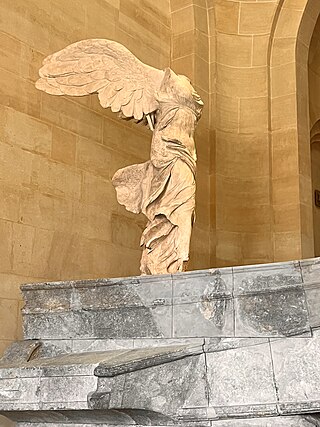
The Winged Victory of Samothrace, or the Nike of Samothrace, is a votive monument originally found on the island of Samothrace, north of the Aegean Sea. It is a masterpiece of Greek sculpture from the Hellenistic era, dating from the beginning of the 2nd century BC. It is composed of a statue representing the goddess Niké (Victory), whose head and arms are missing, and its base is in the shape of a ship's bow.
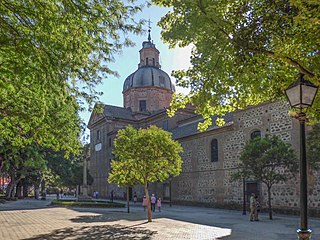
Talavera de la Reina is a city and municipality of Spain, part of the autonomous community of Castile–La Mancha. Its population of 83,303 makes it the second most populated municipality of the province of Toledo and the fourth largest in the region.

The Mexican state of Nuevo León has been governed by more than a hundred individuals in its history, who have had various titles and degrees of responsibility depending on the prevailing political regime of the time.
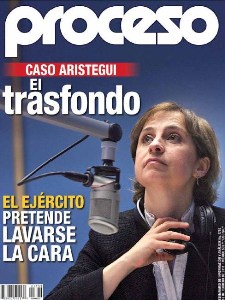
Proceso is a left-wing Mexican news magazine published in Mexico City. It was founded in 1976 by journalist Julio Scherer García, who additionally served as its president until his death in 2015. Proceso was traditionally renowned for its left-wing journalism.

Castro culture is the archaeological term for the material culture of the northwestern regions of the Iberian Peninsula from the end of the Bronze Age until it was subsumed by Roman culture. It is the culture associated with the Gallaecians and Astures.

The National Archaeological Museum is a museum in Madrid, Spain. It is located on Calle de Serrano beside the Plaza de Colón, sharing its building with the National Library of Spain.

In the Archaic phase of ancient Greek art, the Orientalizing period or Orientalizing revolution is the cultural and art historical period that began during the later part of the 8th century BC, when there was a heavy influence from the more advanced art of the Eastern Mediterranean and the Ancient Near East. The main sources were Syria and Assyria as well as Phoenicia and Egypt. With the spread of Phoenician civilization by Carthage and Greek colonisation into the Western Mediterranean, these artistic trends also influenced the Etruscans and early Ancient Romans in the Italian peninsula.

The Cuba women's national volleyball team was the first team to break the USSR's and Japan's domination in the world women's volleyball by winning the 1978 World Women's Volleyball Championship.

The National Archaeological Museum of Florence is an archaeological museum in Florence, Italy. It is located at 1 piazza Santissima Annunziata, in the Palazzo della Crocetta.

The Cuba men's national basketball team represents Cuba at international competitions. It won the bronze medal at 1972 Summer Olympics and finished in 4th place at the 1974 FIBA World Championship. It is the only team from the Caribbean to win a medal at a major global event.
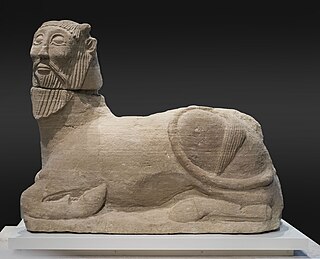
The Bicha of Balazote is an Iberian sculpture that was found in the borough of Balazote in Albacete province, Spain. Carlos Fuentes has called it the "Beast of Balazote." The sculpture has been dated to the 6th century BCE, and has been in the National Archaeological Museum of Spain in Madrid, since 1910.

Iberian sculpture, a subset of Iberian art, describes the various sculptural styles developed by the Iberians from the Bronze Age up to the Roman conquest. For this reason it is sometimes described as Pre-Roman Iberian sculpture.

Jain sculptures or Jain idols are the images depicting Tirthankaras. These images are worshiped by the followers of Jainism. The sculpture can depict any of the twenty-four tirthankaras with images depicting Parshvanatha, Rishabhanatha, or Mahāvīra being more popular. Jain sculptures are an example of Jain art. There is a long history of construction of Jain sculptures. Early examples include Lohanipur Torsos which has been regarded to be from the Maurya period, and images from the Kushan period from Mathura.

The Diana of Gabii is a statue of a woman in drapery which probably represents the goddess Artemis and is traditionally attributed to the sculptor Praxiteles. It became part of the Borghese collection and is now conserved in the Louvre with the inventory number Ma 529.

The Chipaque Formation (Spanish: Formación Chipaque, K2cp, Kc) is a geological formation of the Altiplano Cundiboyacense, Eastern Ranges of the Colombian Andes. The formation is also described as Gachetá Formation, named after Gachetá, in the area of the Llanos foothills of the Eastern Ranges. The predominantly organic shale formation dates to the Late Cretaceous period; Cenomanian-Turonian epochs and has a maximum thickness of 1,700 metres (5,600 ft). The formation, rich in TOC, is an important oil and gas generating unit for the giant oilfields Cupiagua and Cusiana of the Eastern Ranges as well as in the Llanos Orientales.
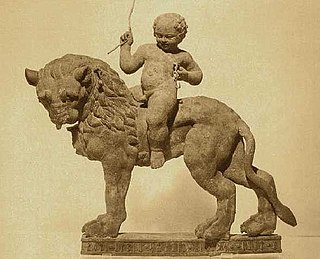
Ancient South Arabian art was the art of the Pre-Islamic cultures of South Arabia, which was produced from the 3rd millennium BC until the 7th century AD.

The Ministry of Economy and Finance is a ministry of the government of Venezuela with similar portfolios dating back to 1810 with the creation of a tax office. When Gran Colombia was dissolved and Venezuela assumed its independence, the Ministry of Finance was created in 1830 when General José Antonio Páez commissioned the establishment of the public business office to three Secretariats of State: Interior, Justice and Police, War and Navy, Finance, and Foreign Relations. The current minister has been Delcy Rodríguez since September 2020.

Paraíso blanco is a Colombian streaming television series produced by Caracol Televisión for TelevisaUnivision. The series is based on the life of former German-Colombian drug lord Carlos Lehder, inspired by the book Crazy Charlie written by Ron Chepesiuk. Sebastián Osorio stars as Lehder. The series premiered on Vix on 20 July 2023.




















